
|
Vol 76 |
Page 3 |
Privacy Policy | Editorial Policy | Profit Policy | Join the Association | List of Members | Contact us | Index | Links
Back Go to page: 1 2 3 4 5 6 7 8 9 10 11 12 13 14 15 16 17 18 19 20 Forward
Contents.
RAAF Women's Hockey - Canberra.
Page 3 Girl.
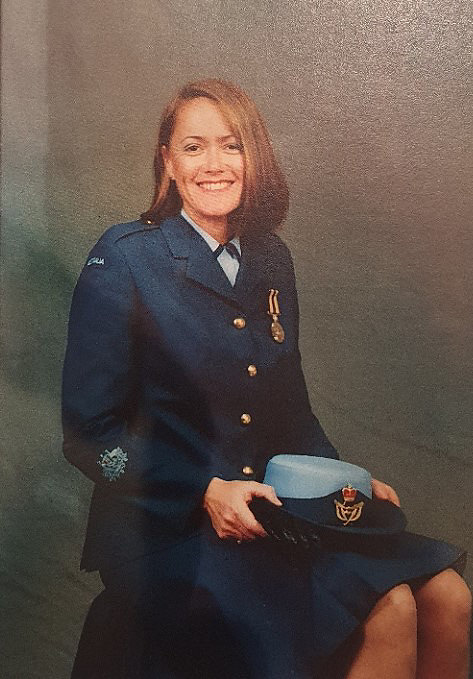
Our lovely Page 3 girl this issue is Bonita (Bonnie) Boon. Bonnie was born in Brisbane and was schooled in Mt Gravatt, one of Brisbane’s southern suburbs. She was the youngest of 4 children, with two brothers and one sister. After graduation, she applied to enter Teacher’s College, but not having enough points in her final “exam score” she missed out. Not deterred, she enrolled in the Kangaroo Point Business college.
Prior to this, her two brothers had joined the Air Force, one as an electrician, the other as a framie and they kept telling Bonnie of the great life a member of the Air Force enjoyed. Not getting her wish to be a teacher, she was a bit unsettled, her mum wanted her to apply as a teacher’s aid from which she could re-apply to get into Teacher’s College but she thought business would be better. She started the Course, but as her brothers kept talking Air Force, she thought “why not?”. She had spent some time at RAAF Recruiting in Brisbane looking over the jobs that were (at that time) available for women, she looked at the Personnel Selection Assessor and Dental Assistant musterings but as there were no vacancies in those two musterings, in the end the Photo Plotter (APHPLOT) position took her eye and although the job description was a bit vague, it was the highest paid. So she applied and three months into the Business course, she was accepted.
In April 1972 she started her Air Force journey as a WRAAF at 1RTU in Edinburgh. She joined a 4 week recruit training course (Course 207) after which she and two other raw recruits, Merilyn Melehan and Gail Livesey, were sent by train to Central Photographic Establishment (CPE) at Laverton to begin the 6 month Air Photo Plotters Course. In November 1972, having completed the course, she began her career as a Photo Plotter, filing and cataloguing maps, plotting aerial imagery onto maps, registering aerial imagery etc. Initially Bonnie was under the impression that the mustering was exclusively female and that Laverton was the only posting for Photo Plotters – she was in for a shock. Not long after arriving at Laverton, she passed her LACW trade test and shortly after sat for and passed the CPL exam.
One day, after she had been at CPE for a couple of years, she happened to notice a couple of airmen who had arrived in the plotting section and were doing research. The penny dropped, this was when she discovered there were male photo plotters and that they alone enjoyed postings. She also learned that female plotters were not eligible for selection for further progression to Photo Interpreter with overseas training in the US and later in the UK. Her female co-workers seemed to accept these restrictions as the norm – she didn’t!. The men arriving at CPE became her moment of awakening and eventually led her to ask the question of DEFAIR why women were not being posted. Subsequently, beginning January 1975 a colleague, Brenda Proctor and she excitedly accepted a ‘C’ grade (6 month) posting to RAAF Support Unit Canberra (RAAFSUCAN) ‘detachment Fairbairn’ to work as an assistant to the Photo Interpreters. Sadly, in July 1975 they wouldn’t extend the posting despite pleading, so back to CPE Laverton they went. While there, in April 1975 she was promoted to Corporal.
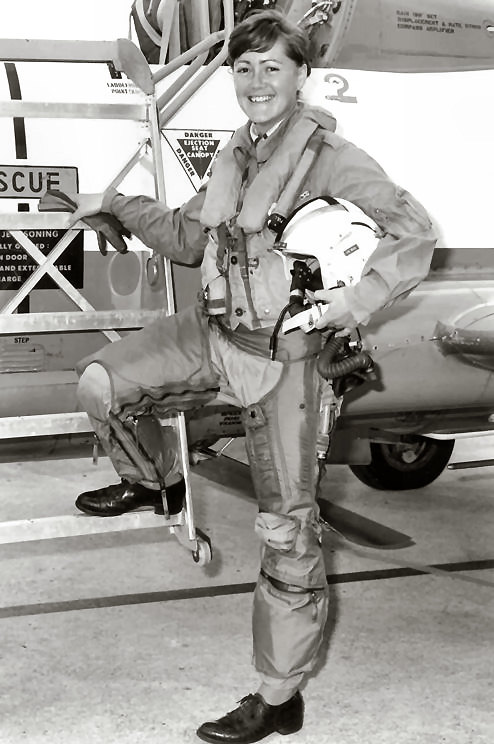
As it transpired other WRAAF Photo Plotters then received short term postings to Fairbairn and Base Squadron Amberley.
During this period at Laverton her passion for sports developed and endured throughout her RAAF career. She learnt to play hockey, badminton, basketball and orienteering and competed at Interservice level in athletics, swimming and softball. There would be contests against the RAAF Publication Unit WRAAFs in cricket and softball and once against ARDU girls in a rigorous game of soccer. The foundation was set for representation for later years playing Combined Services Hockey. These were great ways to get to know other musterings as well as so many amazing people from all services.
She also became fascinated with flying. Many put their names in the hat to get the chance to fly in a Dakota with a Perspex observation bubble on the regular “FISHEX” surveillance flights around Tasmania. She had her first exciting flight in a Machhi from ARDU which was her introduction to the phrase ‘eject, eject, eject’ should the harrowing need arise. Another memorable flight was in an Army Pilatus Porter with a friend whose service hat would never smell the same again, though Bonnie admitted to experiencing a similar upset stomach quite a few times in other “famil” flights.
In the summer of 1976, it was off to Wagga for an Instructional Techniques Course where under attack from the heat and the ever present flies, she completed the course.
By late Nov 1978, after more agitation by her work colleague and friend, Brenda Proctor, unbelievably both were offered an overseas attachment to RAAF London to commence the 5 month training as Photo Interpreters at the Joint School of Photographic Interpretation at RAF Wyton. The course ran from Jan until May 1979. They were made ‘Provisional Sergeants’ before departing Australia and became substantive on successful completion of the Basic course in March 1979.
On passing the basic course they were remustered to Photo Interpreter after which they completed an intensive Tactical Course in May and then took off for a well-deserved holiday to Europe before returning to Australia.
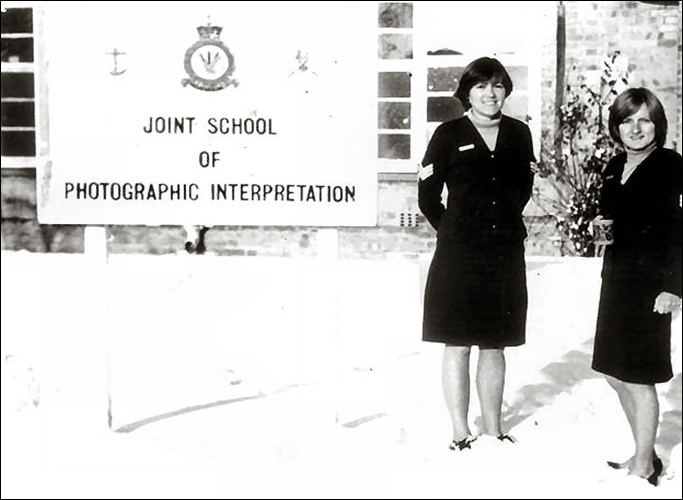
Bonnie (left) and Brenda Proctor at RAF Wynton – that is snow in which they are standing.
Bonnie says she and Brenda left Australia just after Christmas in 1978 but packed for an Australian winter, not a UK winter. They had an idea it would be cold but there’s cold and there’s cold. Prior to going they begged L group to be issued with blue skivvies and with the RAAF issue cardigan packed securely in the bag it was off to the UK. Tramping through the snow 3 times a day between the Sgt’s Mess and the school, wearing uniform skirts, skivvies and two pairs of panty hose, they froze. Even though the snow was a novelty they eventually wised up and got permission from the School CO to wear suitably warm civvies.
Back in Australia, with 3 stripes on her arm, in August 1979, it was off to HQ at Amberley but within 6 months she was posted across the road to 1 Sqn She had some dealings with 2 Sqn, which was at Amberley back then and still operated the Canberra aircraft but instead of being used as it was designed, was equipped with high resolution cameras and flew around the pacific taking photos. Bonnie’s job was to analyse and catalogue these photos.
Her time at 1 SQN holds so many fond memories. Overseas exercises allowed her the opportunity to travel: for RIMPAC to Hickham AFB, Hawaii Feb/Mar 1980; for Exercise Giant Voice to Mt Home AFB, Idaho USA Oct 1980 followed by Red Flag at Nellis AFB Las Vegas Nov 1980. In-country exercises included Pitch Black Darwin 1980, Exercise Sandgroper Pearce Sep 1980 and Kangaroo 81 out of Amberley. 1980 was a busy year!
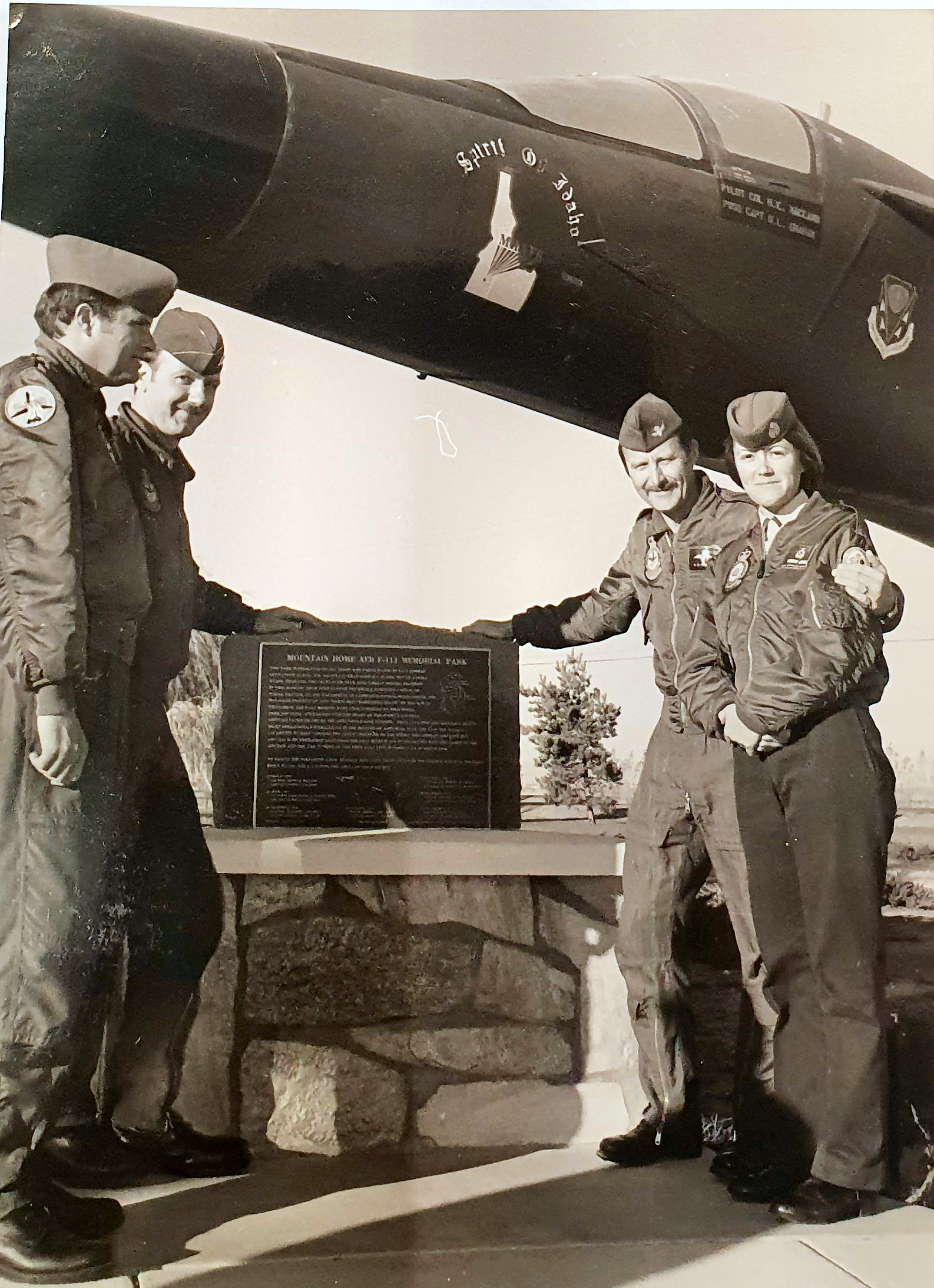
At Mt Home AFB in the US are: L-R: WGCDR Bruce Searle the CO, CAPT Tom Bergam USAF Exchange Navigator, SQNLDR ‘Thatch’ Phillips the XO, and Bonnie.
Through her posting at Amberley and resulting Exercises, she took the opportunity to fly in Caribou, Chinook, Hercules, Canberra, Orions (on a couple of missions each lasting 12 – 13 hours), Boeing 737, USAF KC135 during K81 refuelling F-111 and the F-111. She also started flying lessons at the Base Flying Club but although not a natural born aviator, it was something on her bucket list at that time.
Ironically she was unable to do her job to support the Squadron when it went to Butterworth because, at that time, there was no on-base accommodation for female NCOs and no suggested options were accepted. In December 1981, soon after the Butterworth disappointment, she was posted to Canberra. She tried to fight this unexpected end to her comparatively short 1SQN chapter, but without success.
So it was off to ‘The Barn’ situated at Fairbairn; more heat, more flies, more cold with frozen water pipes, more icy winds, and sometimes snow. She became the supervisor of a male section as she was now the only female Photo Interpreter as her colleague Brenda had discharged. She endured Canberra for a bit over a year then it was off to Wagga again, this time for a month-long Sergeant Supervisory and Management Course. Back in Canberra she was promoted to Flight Sergeant and appointed the section supervisor.
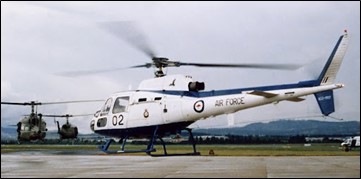
While in Canberra she was able to go flying in an HS 748, the Iroquois and Squirrel helicopters being used at 5 SQN’s Helicopter Flying School and she managed to escape Canberra via many C-130 flights.
Her unit played for ‘The Ashes’ trophy against the British Embassy Defence personnel whilst the American Embassy Defence Staff taught them a few lessons about softball.
As a Flight Sergeant she had the honour of leading the women’s flight onto the parade for the presentation of the Queen’s Colours at Richmond in March 1986.
All the ladies were temporarily attached to Richmond for a month for drill practice and on the day, performed faultlessly.
Back in March 1982, Her Majesty had approved a new design for the Queen's Colour for the RAAF. This Colour was presented to the RAAF by Her Majesty on 5 March 1986 at RAAF Base Richmond.
The Colour is of sky-blue silk with fringe, cord and tassel of gold and crimson silk. The Colour bears in the centre the Royal Cypher with the Union Flag in the top left-hand corner and the RAAF Roundel in the bottom right-hand corner. A border of wattle is embroidered around the Colour; inside this border are the five stars of the Southern Cross, and a larger star, which signifies the Federation of Australian States.
After the parade and it’s ensuing celebrations in the various Messes, Bonnie returned to Canberra but not for long as in June 1986 it was time to pack the bags again and off to East Sale for a month long Basic Weapons Course, then instead of heading home it was off to Williamtown for another course, this time an Introduction to Joint Warfare, though this course only lasted a week. With these two additional tickets to her name she returned to Canberra and enjoyed a normal life for about 18 months then the dreaded message was received, another posting, this time back to CPE at Laverton where she was to manage the film library, process photographic requests and generally ensure the unit ran smoothly. While there she also undertook a language aptitude test at the Point Cook School of Languages.
In Jan 1989, the all too familiar message was received, another posting, though this time back to Amberley – back to maroon land. Another A grade posting, this time to 82 Wing where she was promoted to WOFF (1st May 1989). 82 Wing was being reorganised and she was moved across to the Photographic Processing and interpretation Facility (PPIF) at 6 Sqn, the recon SQN. From 1970, 6 Sqn had operated F-4E Phantoms leased from the USAF, but they were replaced by the General Dynamics F-111s in 1973. 6 Sqn took on responsibility for F-111C conversion training and late in 1979, also received the first of four reconnaissance conversions of the type, re-designated RF-111C. Bonnie’s job at 6 Sqn was to run the reconnaissance intelligence section.
During this period with 6SQN she went on exercise Pitch Black working out of Tindal and flew on a low level tactical mission in a C-130 for the fully kitted SASR to make a jump. (have to be crazy/tough to do that). Her last overseas exercise was with 6SQN RF-111s on Exercise Allied Exposure with Air National Guard in Reno Nevada in September 1991. After the exercise four RAAF Techs and she shared a car and a motel room in a flying visit to see the main sights of San Francisco.
While at Amberley it was back onto the books, she completed the week long Introductory Maritime Tactics Course which was held at HMAS Albatross at Nowra, NSW and in 1991 the two week Counter Surveillance Instructors Course at the Army’s School of Military Engineering at Casula, near Liverpool in NSW, then later in 1991 it was down to the Point Cook school of languages for a 3 month KHMER colloquial language course.
But it wasn’t all study and work, there were many opportunities to enjoy a “famil” flight in one of Amberley’s aircraft, though, as before, sometimes experiencing a rather upset stomach.
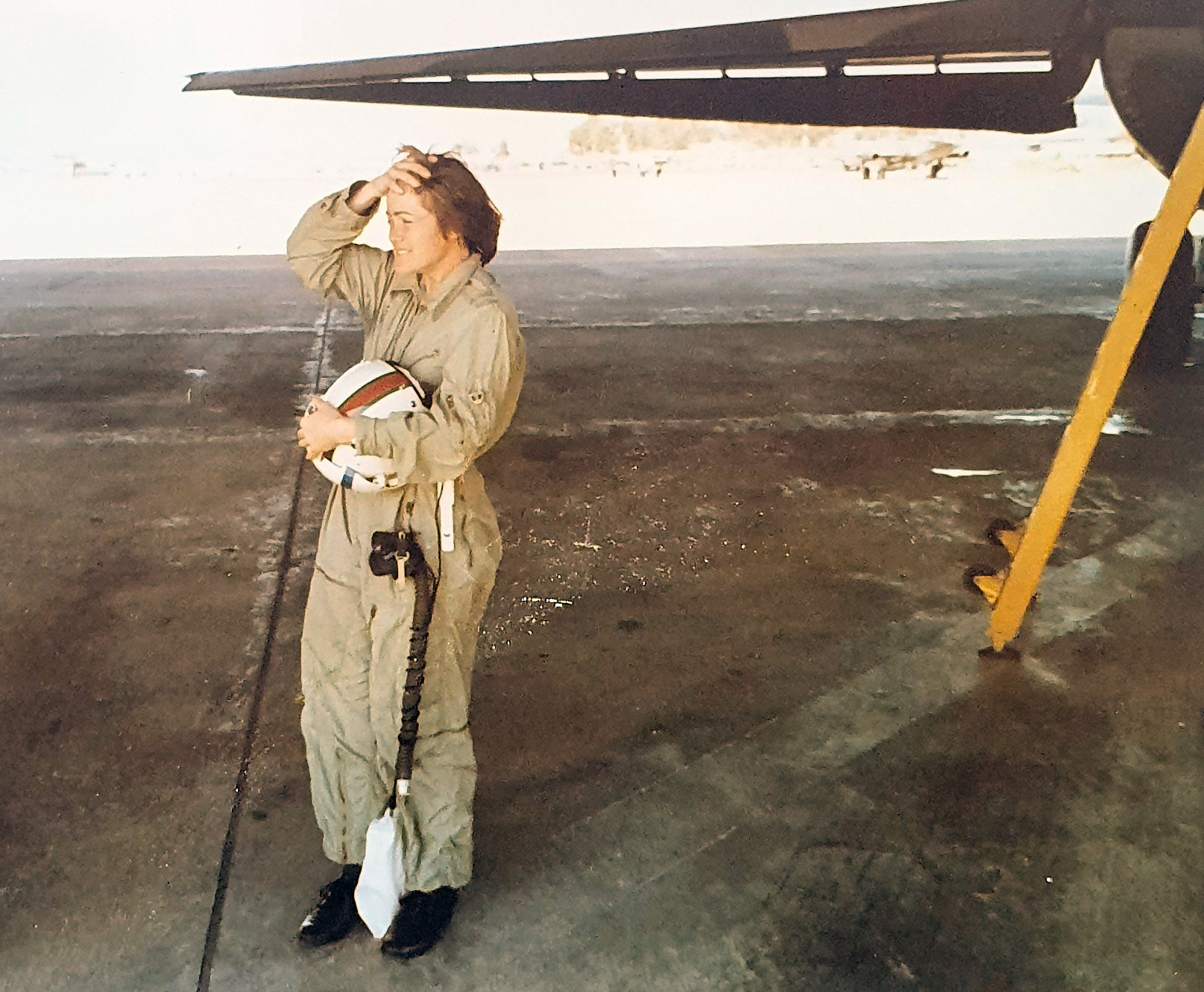
Early in 1992 it was back to Wagga for a 2 week Instructional Techniques Course then in 1993 it was back to Wagga again, this time for another 2 week Training Design course.
These two courses were in support of a posting with a difference. This time it was down to the School of Military Intelligence (SMI) at Kokoda Barracks, the Army Camp at Canungra on the Gold Coast hinterland. This was a big shock, was this the same ADF in which she had spent so many years? Being a singular ‘blue orchard’ in a green jungle environment was very interesting to say the least. When she was eventually made to wear DPCU, as the camouflage gear was called, she lost her Air Force identity.
There were so many contrasts to RAAF way of life - marching to the mess or the barracks; compulsory mess attendance for functions; compulsory involvement in out of hours activities such as ‘clean up Australia’ Saturday, Red Shield appeal Sunday, a compulsory night Base Swimming Carnival; regular unit PT sessions starting at 0700 hours and no time off in lieu; compulsory attendance at the ANZAC dawn service and serving rum breakfast prior; compulsory participation in the obstacle course ending with jumping off the 10metre tower into the weir; Steyr practice and proficiency training; compulsory 15km Route March wearing DCPU and webbing belt, and carrying a rifle with the irregular change into double time.
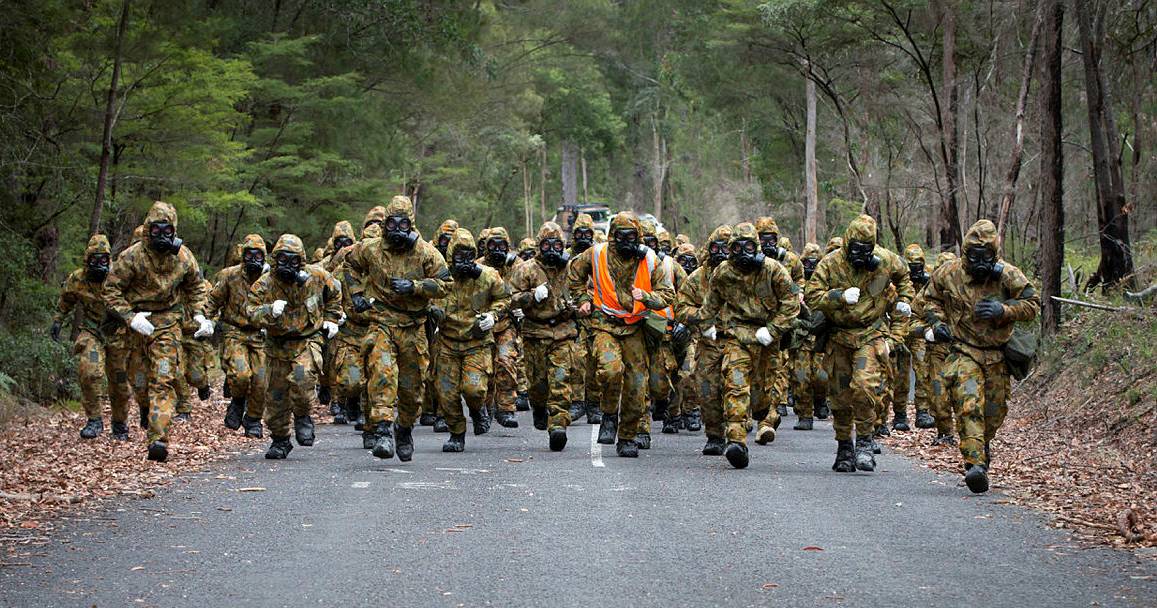
The training area has roads going up hills that seem to go on forever and was a killer for teams carrying or rolling huge truck tyres up and down. Crawling through man made dirt tunnels in total blackness and having to rely on the person in front of you while hoping the tunnels had been cleared (of vermin) properly before going in. But then of course there was the actual instruction during Courses.
Having completed the two instructional courses at Wagga, her job for the next six and a quarter years was to run the Photo Interpreter courses at the Defence Intelligence Training Centre which was set up at Canungra. Role playing in Army courses and ‘Resistance to Interrogation’ activities took a lot of time away from Course preparation but it gave her a real appreciation of activities taking place outside of her own small Air Force environment.
Whenever she needed a ‘blue fix’ she would find a reason to drive back to her administrative unit at Amberley.
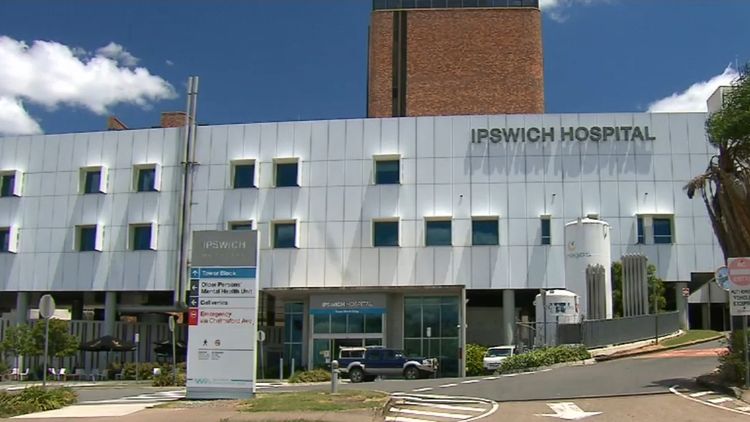
In April 1998, after 26 years with the Air Force, she decided it was time for a change, so she took a discharge in Brisbane. She realised there wasn’t too much demand in civvy street for someone with her unique talents, so she decided it was time for a vocation change. She enrolled at Griffith University and completed a 3 year Bachelor of Arts-nursing degree, then it was off to Ipswich Hospital for 17 years of self-satisfactory work.
The majority of her nursing career was as a general nurse in the speciality out-patients department which had a major advantage, no night shifts, no weekend work. She spent many satisfactory years gaining new knowledge and updating skills. Her most satisfactory role was being able to advocate for patients in their contact with doctors when the need arose.
Finally, in 2018 she decided it was time to hang up the scrubs and to start to take it easy. Now she spends her time singing in a A Cappella chorus (barbershop) which is headquartered in Paddington (Brisbane) and she is very involved in the local Ex-WRAAF Association. She is also lucky to have a 101 year old mum who still lives in her own home and who she often helps out with day to day living.
Appy Photos.
We were given the following Apply pics, from Laverton.
27 RAC
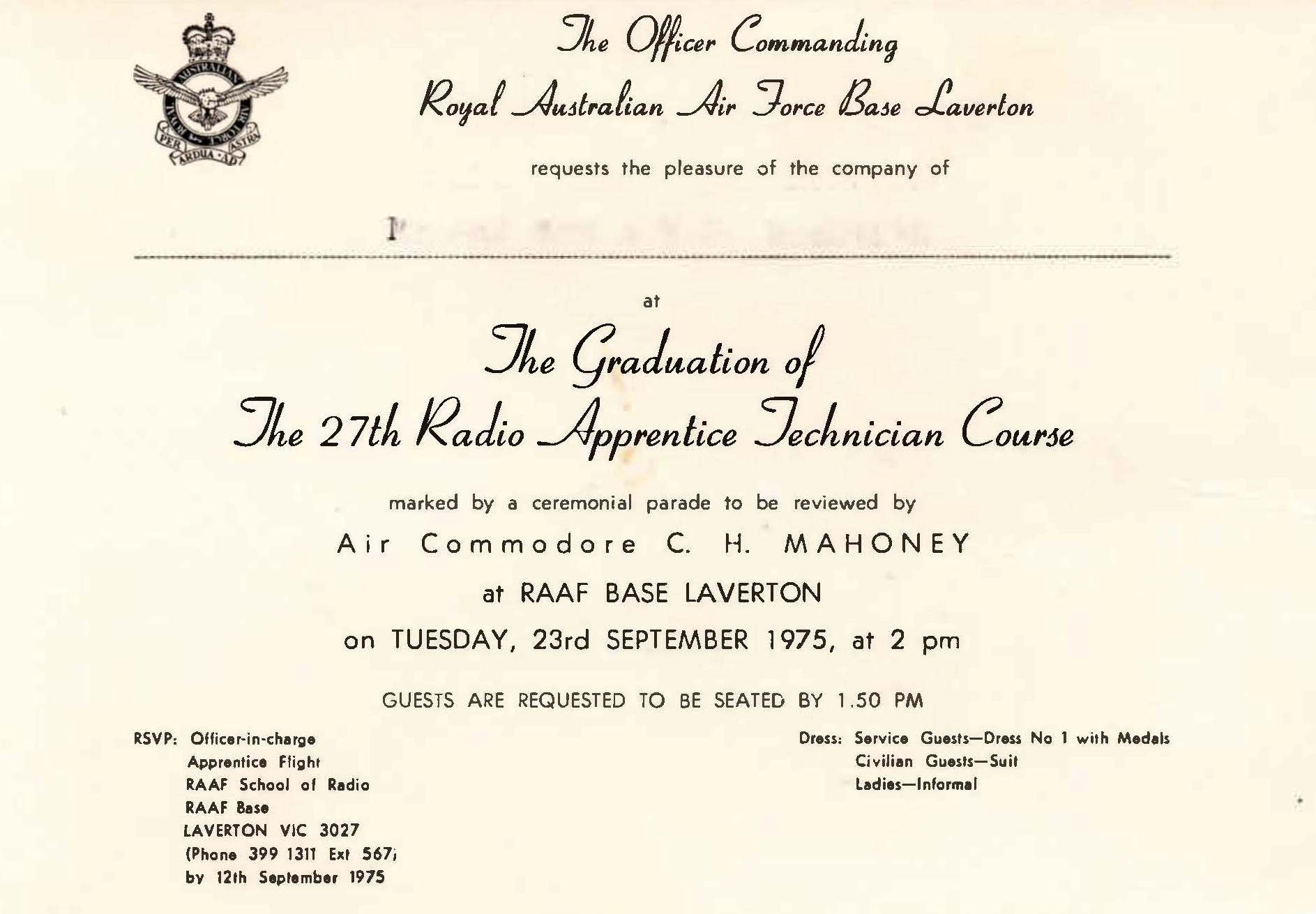
L-R: Len Biglin, AirCdr Mahoney, Peter Lewis, Arthur Green, Hans Vogels (Sgt), Stephen Harris.
Pete Rosser 25 RAC
Shane McManus 25 RAC
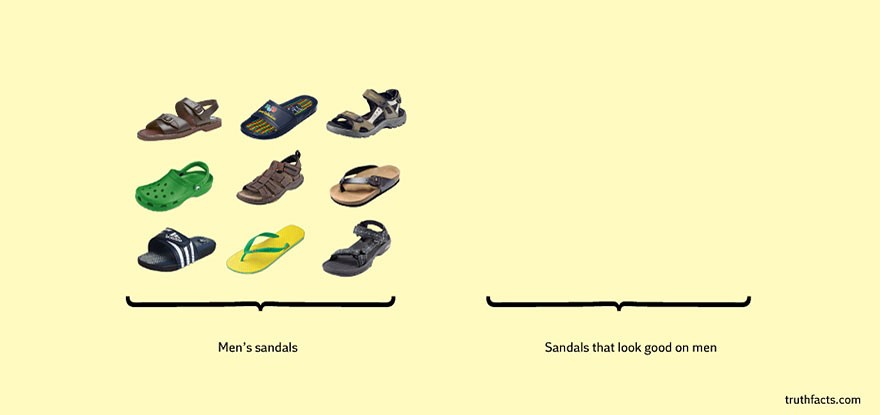
RAAF Women’s Hockey, Canberra.
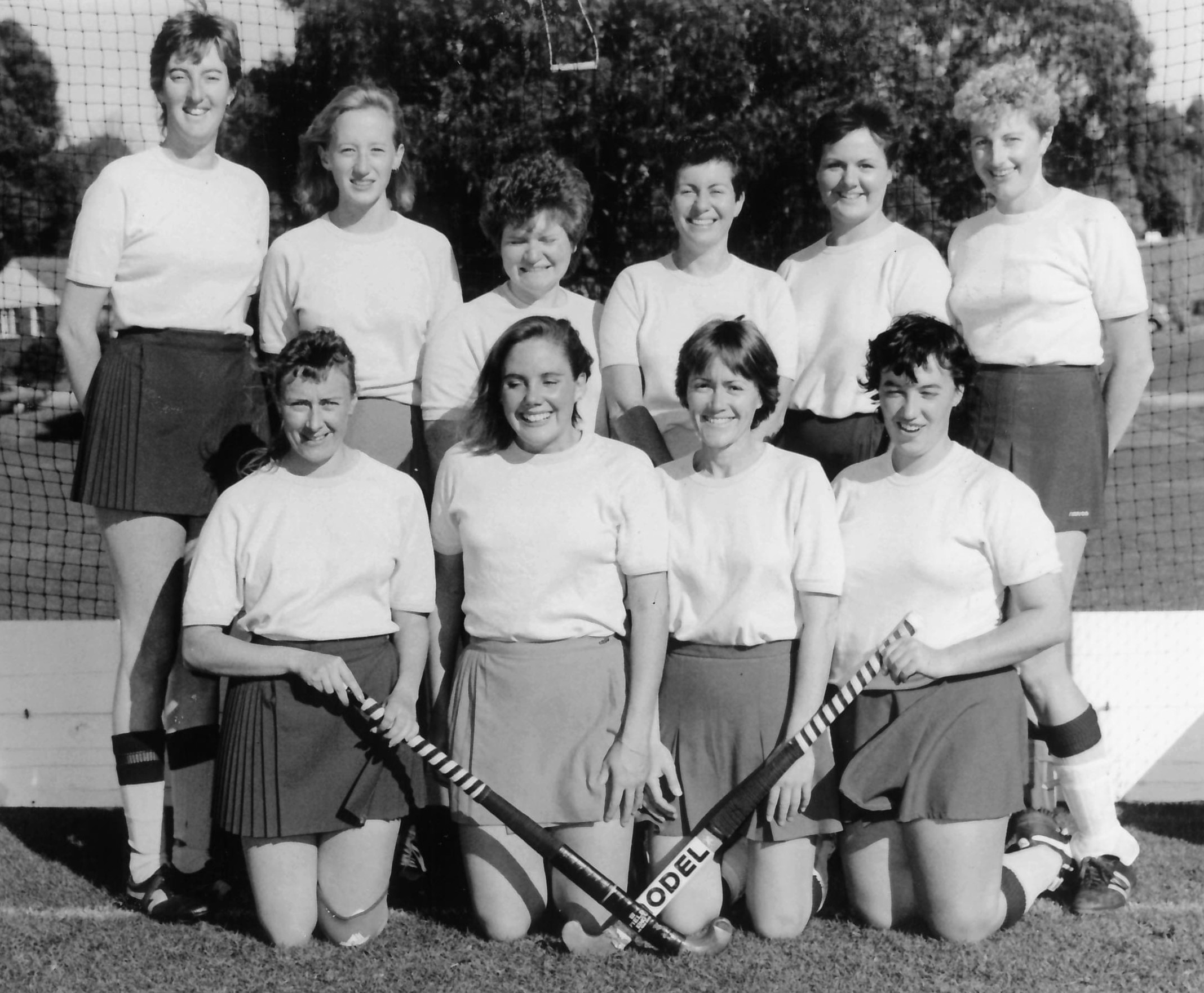
15 TTC
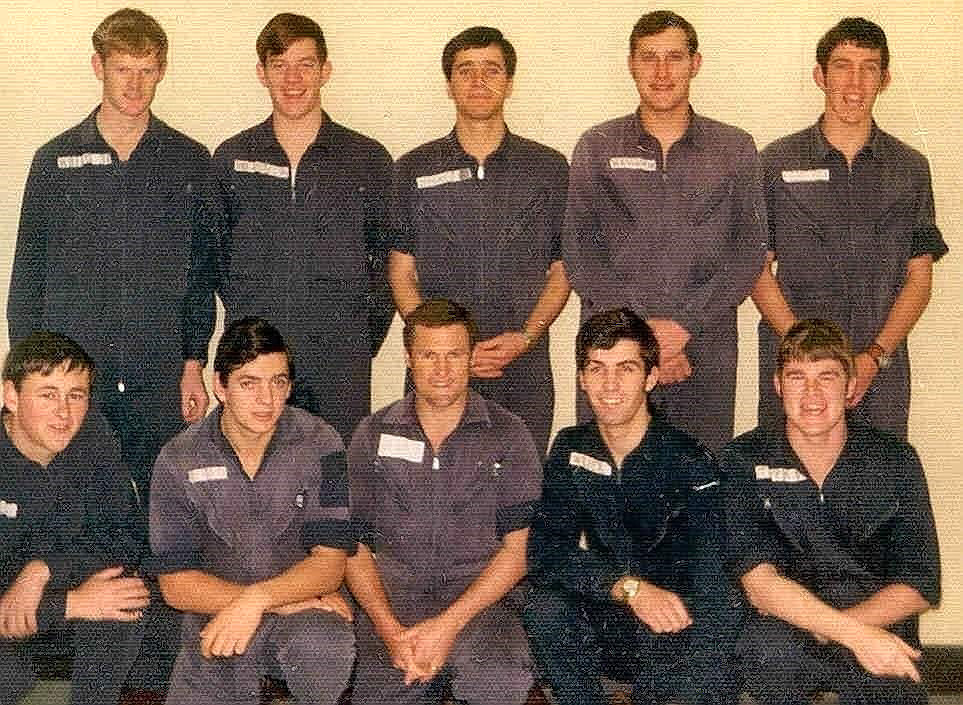
Standing L-R:. Peter “Blitz” Krieg, Hans-Robert (Fritz) van (Animal) Amstel, Ted Hughes, Bob (Scrubber) Schrivener, Ray (Spider) Worner.
Front L-R: Anthony Kociuba, Mick Murphy, Noel Quarrel, Dave Webber, Laurie Tippins.
Back Go to page: 1 2 3 4 5 6 7 8 9 10 11 12 13 14 15 16 17 18 19 20 Forward